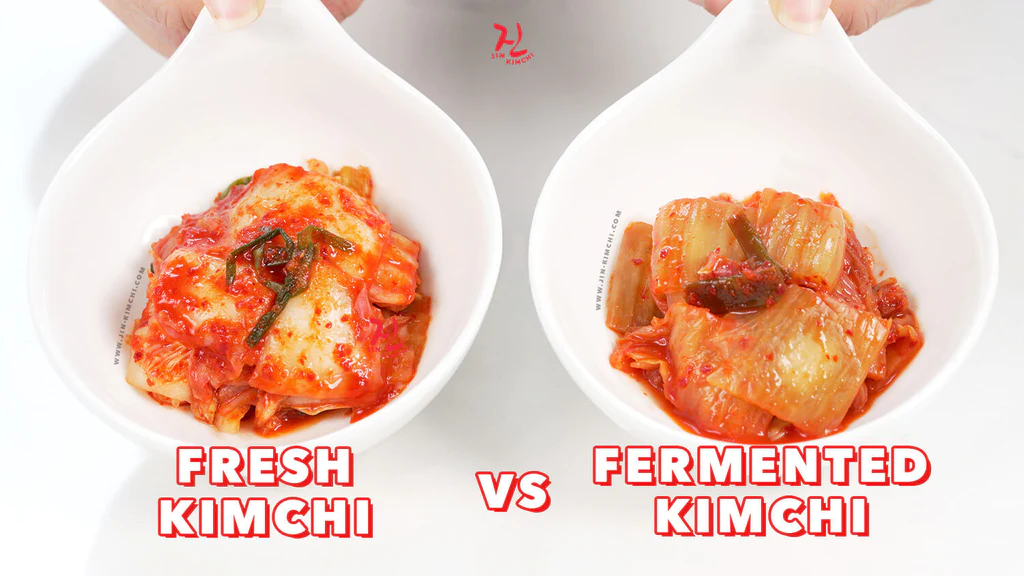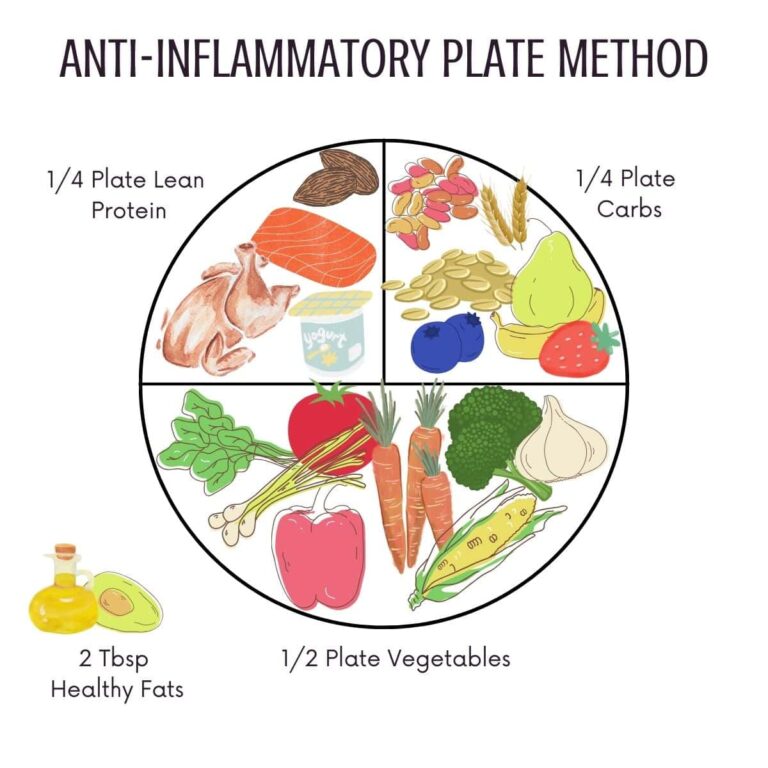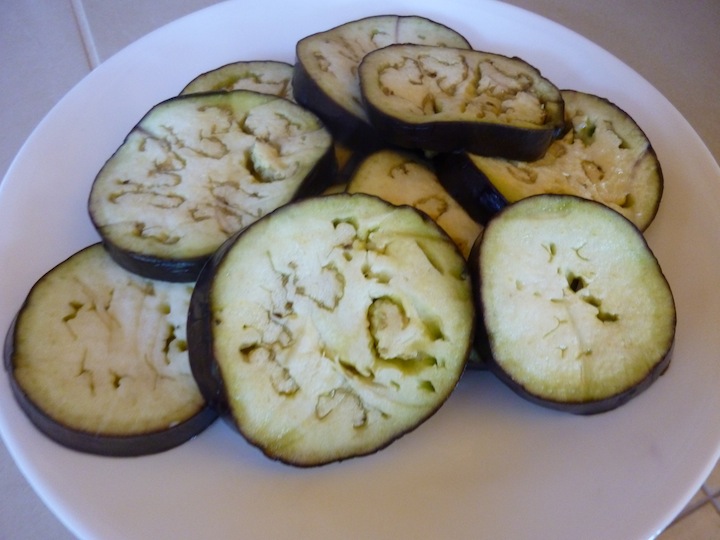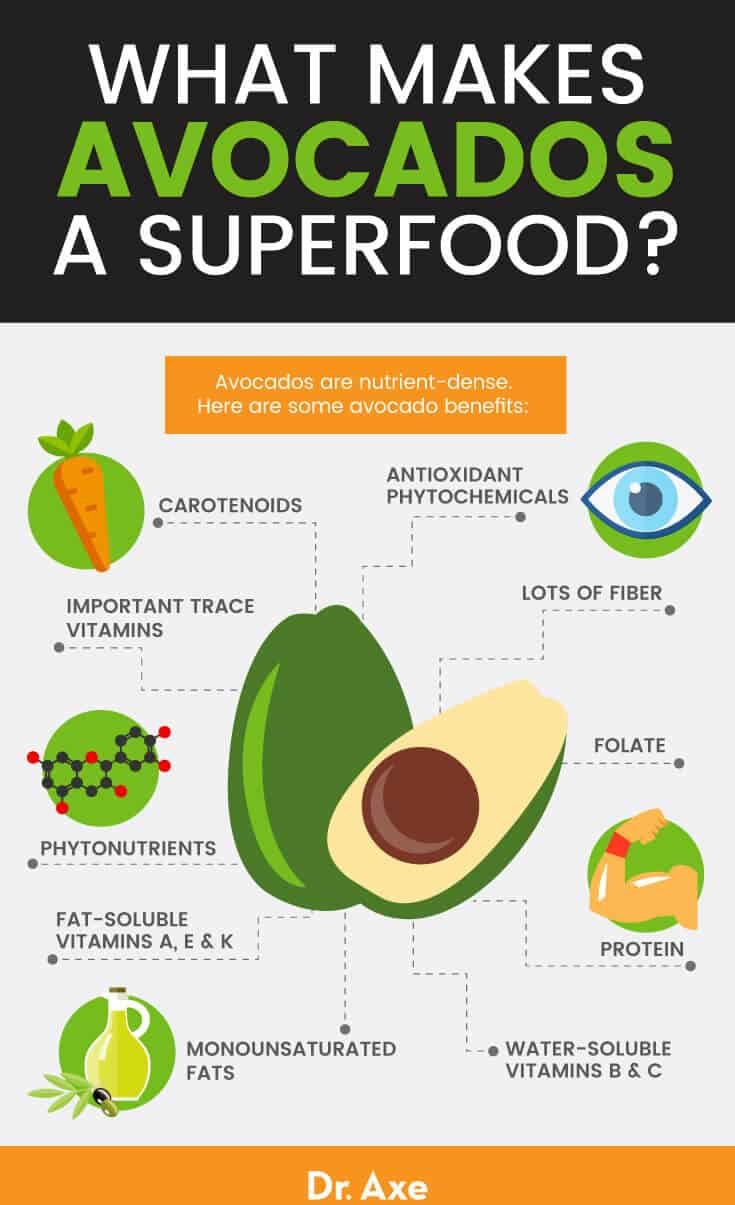The Fermented Way to a Fitter You: Kimchi and Weight Management
In a world increasingly seeking quick fixes and magic pills for weight loss, the most profound answers often lie in the wisdom of ancient traditions, meticulously preserved and now illuminated by modern science. One such venerable tradition, deeply rooted in the heart of Korean culture, is the creation and consumption of kimchi. More than just a side dish, kimchi is a vibrant, living entity – a testament to the transformative power of fermentation, and an increasingly recognized ally in the complex journey toward a fitter, healthier self.
This isn’t merely a story of calories in versus calories out; it’s a narrative woven from the intricate dance of microorganisms, the subtle power of nutrient-dense vegetables, and the profound connection between our gut and our overall well-being. It’s the story of how a humble cabbage, expertly salted and spiced, can become a potent catalyst for metabolic health, appetite regulation, and a flourishing inner ecosystem, leading us along the fermented way to a fitter you.
Chapter 1: The Soul of Korea in a Jar – What is Kimchi?
To understand kimchi’s role in weight management, we must first appreciate its essence. Kimchi is not a singular dish but a category of traditional Korean fermented vegetable side dishes, typically made with napa cabbage and Korean radish, seasoned with a potent mixture of gochugaru (chili powder), garlic, ginger, green onions, and often jeotgal (fermented seafood, like anchovy or shrimp paste). It’s a culinary cornerstone, present at virtually every Korean meal, revered for its robust flavor, tantalizing crunch, and deep cultural significance.
The history of kimchi stretches back millennia, evolving from simple salted vegetables to the complex, spicy, and probiotic-rich staple we know today. Its genesis was a pragmatic one: a method for preserving vegetables during harsh winters when fresh produce was scarce. Over centuries, this practical necessity blossomed into an art form, with each family often possessing a unique, cherished recipe passed down through generations. Kimchi-making, or "kimjang," is so vital to Korean identity that it has been recognized by UNESCO as an Intangible Cultural Heritage of Humanity, underscoring its profound social and cultural importance. It’s a communal act, a time for families and communities to gather, sharing labor, stories, and the promise of sustenance.
At its heart, kimchi is a marvel of lacto-fermentation. This natural process involves beneficial bacteria, primarily Lactobacillus species, converting sugars in the vegetables into lactic acid. This lactic acid acts as a natural preservative, giving kimchi its characteristic tangy flavor, and, crucially, creating an environment that inhibits the growth of harmful bacteria while allowing beneficial ones to thrive.
The journey begins with salting the cabbage, which draws out water, wilts the leaves, and creates a brine that kickstarts the fermentation by favoring specific microbial communities. After rinsing, the cabbage is meticulously coated with the vibrant spice paste – a symphony of flavors and bioactive compounds. The mixture is then packed tightly into jars or traditional onggi (earthenware pots) and allowed to ferment at cool temperatures. Over days, weeks, or even months, the magic unfolds. The crunch softens slightly, the flavors deepen and meld, and the once-simple vegetables transform into a complex, living food, teeming with beneficial microorganisms and enhanced nutritional properties.
This transformative process is key to kimchi’s health-promoting attributes, particularly its potential in weight management. It’s not just about the raw ingredients, but about what happens to them, and what they become, under the watchful eye of these microscopic artisans.
Chapter 2: The Microbiome Unveiled – Kimchi’s Inner Magic
Our understanding of human health has undergone a revolutionary shift in recent decades, moving from a singular focus on human cells to an appreciation of the vast, intricate ecosystem residing within us: the gut microbiome. This bustling community of trillions of bacteria, viruses, fungi, and other microorganisms, primarily located in our large intestine, profoundly influences everything from our immune system and mood to our metabolism and, critically, our weight.
A balanced and diverse gut microbiome is increasingly recognized as a cornerstone of metabolic health. Conversely, dysbiosis – an imbalance in the gut flora – has been linked to various chronic conditions, including obesity, type 2 diabetes, and inflammatory bowel disease. This is where fermented foods like kimchi step onto the stage, acting as powerful modulators of this inner world.
Probiotics: The Living Army Within
Kimchi is a rich source of probiotics, live microorganisms that, when administered in adequate amounts, confer a health benefit on the host. The dominant species found in kimchi are various strains of Lactobacillus, such as Lactobacillus plantarum, Lactobacillus brevis, and Lactobacillus sakei. These aren’t just any bacteria; they are highly adapted to the human gut and play crucial roles:
- Improving Gut Barrier Function: Probiotics help to strengthen the integrity of the intestinal lining, preventing "leaky gut" (increased intestinal permeability) which can lead to systemic inflammation and contribute to metabolic dysfunction.
- Modulating Immune Response: A significant portion of our immune system resides in the gut. Probiotics help train and regulate immune cells, reducing chronic low-grade inflammation often associated with obesity.
- Producing Beneficial Compounds: They ferment dietary fiber, producing a variety of beneficial metabolites.
Prebiotics: Fuel for the Good Guys
Beyond introducing beneficial bacteria, kimchi also provides prebiotics, non-digestible food ingredients that selectively stimulate the growth and/or activity of beneficial bacteria already residing in the colon. The fiber from the napa cabbage, radish, and other vegetables in kimchi acts as a prebiotic, nourishing the Lactobacillus and other beneficial strains. This symbiotic relationship – probiotics introducing good bacteria, prebiotics feeding them – creates a powerful synergistic effect, fostering a thriving, diverse microbiome.
Postbiotics: The Metabolites of Health
Perhaps one of the most exciting areas of research involves postbiotics, the beneficial metabolic byproducts produced by probiotics during fermentation. The most well-known are short-chain fatty acids (SCFAs), primarily acetate, propionate, and butyrate. These SCFAs are not just waste products; they are potent signaling molecules with far-reaching effects on our metabolism and overall health:
- Butyrate: A primary energy source for colonocytes (cells lining the colon), butyrate strengthens the gut barrier, reduces inflammation, and has been shown to improve insulin sensitivity and glucose homeostasis. Some studies suggest it can also influence fat metabolism and energy expenditure.
- Propionate: Produced in the gut, propionate can travel to the liver, where it may play a role in glucose production and cholesterol synthesis. It also appears to contribute to satiety by stimulating the release of gut hormones.
- Acetate: The most abundant SCFA, acetate can be used for energy by various tissues and may influence appetite regulation.
By modulating the gut microbiome through probiotics, prebiotics, and the resulting postbiotics, kimchi can subtly yet profoundly influence our metabolic pathways, improving how our bodies process food, store fat, and manage energy.
The Gut-Brain Axis: A Deeper Connection
The gut microbiome also communicates directly with the brain via the gut-brain axis, a bidirectional communication network. This connection influences mood, stress response, and even food cravings. A healthy, diverse microbiome, fostered by foods like kimchi, can contribute to reduced stress, improved mood, and potentially better control over emotional eating – an often-overlooked but critical factor in weight management. When our inner world is balanced, our external choices often follow suit.
Chapter 3: Beyond the Bugs – The Power of Kimchi’s Ingredients
While the microbial magic of fermentation is undeniably central to kimchi’s health benefits, we cannot overlook the inherent power of its individual components. Each ingredient contributes a unique spectrum of bioactive compounds, vitamins, minerals, and fiber, creating a synergistic effect that amplifies its potential for weight management.
Napa Cabbage (Baechu): The Foundation of Fiber and Nutrients
The primary ingredient in most kimchi varieties, napa cabbage, is a cruciferous vegetable renowned for its nutritional density and low-calorie count.
- High in Fiber: Dietary fiber is a cornerstone of weight management. It adds bulk to food, promoting satiety and reducing overall calorie intake. It also slows digestion, helps regulate blood sugar levels, and, as a prebiotic, feeds beneficial gut bacteria.
- Low Calorie Density: Napa cabbage allows for significant volume consumption without excessive calories, making you feel full without overeating.
- Rich in Vitamins and Minerals: It provides essential vitamins (C, K, B-vitamins) and minerals (potassium, calcium), supporting overall health and metabolic function.
- Glucosinolates: Like other cruciferous vegetables, cabbage contains glucosinolates, compounds that, when broken down, form isothiocyanates (e.g., sulforaphane). These compounds are potent antioxidants and anti-inflammatory agents, further supporting metabolic health by reducing cellular stress.
Garlic: The Pungent Powerhouse
Garlic is not just a flavor enhancer; it’s a medicinal marvel. Its primary active compound, allicin, is released when garlic is crushed or chopped.
- Metabolism Boost: Allicin and other sulfur compounds in garlic have been linked to improved metabolism and potential thermogenic effects (increased heat production, burning more calories).
- Anti-inflammatory and Antioxidant: Garlic’s potent anti-inflammatory and antioxidant properties help combat chronic inflammation, a key driver of obesity and metabolic syndrome.
- Blood Sugar Regulation: Some studies suggest garlic can help improve insulin sensitivity and regulate blood glucose levels.
Ginger: The Warming Digestive Aid
Ginger adds a spicy, pungent kick and a wealth of health benefits. Its main bioactive compounds are gingerols and shogaols.
- Thermogenesis and Metabolism: Gingerols have been shown to increase thermogenesis and promote fat oxidation, potentially contributing to a slight boost in calorie burning.
- Digestive Support: Ginger is a well-known digestive aid, alleviating nausea and promoting healthy gut motility, which is crucial for efficient nutrient absorption and waste elimination.
- Anti-inflammatory: Like garlic, ginger possesses strong anti-inflammatory properties, reducing systemic inflammation that can hinder weight loss efforts.
- Appetite Suppression: Some research indicates ginger may help reduce appetite and increase feelings of fullness.
Chili Peppers (Gochugaru): The Capsaicin Kick
The vibrant red hue and characteristic spice of kimchi come from gochugaru, Korean chili powder. The magic compound here is capsaicin, responsible for the heat.
- Metabolic Boost and Thermogenesis: Capsaicin is a well-researched thermogenic agent. It can temporarily increase metabolic rate and stimulate fat oxidation, meaning your body burns more calories and uses fat for energy.
- Appetite Suppression: Capsaicin has been shown to reduce appetite and increase satiety, leading to a decrease in overall calorie intake. It can also reduce cravings for fatty, salty, and sweet foods.
- Anti-inflammatory: Chili peppers are rich in antioxidants and anti-inflammatory compounds, further supporting overall metabolic health.
Daikon Radish and Other Vegetables: Diverse Nutrients
Many kimchi varieties include daikon radish, green onions, and sometimes other vegetables like carrots or mustard greens.
- Daikon Radish: Rich in digestive enzymes (like amylase and esterase) that aid in the breakdown of carbohydrates and fats, supporting efficient digestion. It also contributes additional fiber, vitamins, and minerals.
- Green Onions and Other Additions: Provide further vitamins, minerals, antioxidants, and a broader spectrum of phytochemicals, enhancing the overall nutritional profile and synergistic effects.
Sea Salt: The Fermentation Facilitator (with a caveat)
While salt is essential for the fermentation process – it draws out moisture, creates the initial brine, and selectively encourages the growth of beneficial lactic acid bacteria – its consumption must be managed. Kimchi can be high in sodium, so moderation is key, especially for individuals monitoring their blood pressure. However, it’s worth noting that fermented foods often taste saltier than their actual sodium content might suggest due to the presence of lactic acid and other flavor compounds.
In essence, kimchi is a highly concentrated package of metabolic allies. It’s not just about the probiotics; it’s a symphony of fiber, antioxidants, anti-inflammatory compounds, and thermogenic agents, all working in concert to support a fitter you.
Chapter 4: The Weight Management Nexus – How Kimchi Delivers
Bringing together the power of fermentation and the inherent goodness of its ingredients, kimchi offers a multifaceted approach to weight management that goes beyond simplistic calorie counting. Its mechanisms are intricate and synergistic, influencing various physiological pathways crucial for maintaining a healthy weight.
1. Metabolic Boost and Enhanced Fat Oxidation:
- Capsaicin’s Role: As discussed, the capsaicin from gochugaru directly stimulates thermogenesis, increasing the body’s energy expenditure. It activates receptors (TRPV1) that signal the body to burn more calories and fat for heat production.
- Gut Microbiome Influence: A healthy and diverse gut microbiome, fostered by kimchi’s probiotics and prebiotics, can influence how efficiently our bodies extract energy from food. A balanced microbiome may lead to less energy being extracted from complex carbohydrates, meaning fewer calories are absorbed. Furthermore, SCFAs, particularly butyrate, have been implicated in improving mitochondrial function, the cellular powerhouses responsible for burning fat for energy.
- Ginger and Garlic: These ingredients also contribute to a slight metabolic lift, supporting the body’s natural fat-burning processes.
2. Satiety and Appetite Control:
- Fiber’s Filling Power: The high fiber content from napa cabbage and other vegetables in kimchi adds bulk to meals, promoting feelings of fullness and satiety. This helps reduce overall calorie intake by curbing overeating and snacking between meals.
- Gut Hormone Regulation: The SCFAs produced by gut bacteria (especially propionate) can influence the release of appetite-regulating hormones such as GLP-1 (glucagon-like peptide-1) and PYY (peptide YY). These hormones signal to the brain that we are full, leading to reduced food intake.
- Sensory Experience: Kimchi’s bold, complex flavors – spicy, sour, savory – provide a highly satisfying sensory experience. This robust flavor profile can enhance meal satisfaction, making smaller portions feel more fulfilling and reducing cravings for bland, calorie-dense foods.
3. Inflammation Reduction:
- Obesity and Chronic Inflammation: Obesity is often characterized by chronic low-grade inflammation throughout the body. This inflammation contributes to insulin resistance, metabolic dysfunction, and makes weight loss more challenging.
- Kimchi’s Anti-inflammatory Arsenal: Kimchi is a powerful anti-inflammatory food. Its probiotics modulate the immune system and strengthen the gut barrier, preventing inflammatory compounds from entering the bloodstream. Additionally, compounds like sulforaphane from cabbage, allicin from garlic, gingerols from ginger, and capsaicin from chili peppers are all potent anti-inflammatory agents, working to quell systemic inflammation and create a more metabolically favorable environment.
4. Blood Sugar Regulation and Insulin Sensitivity:
- Fiber and Digestion: The fiber in kimchi slows down the absorption of sugars into the bloodstream, preventing rapid spikes and crashes in blood glucose levels. This helps stabilize energy levels and reduces the likelihood of insulin resistance.
- SCFAs and Insulin Sensitivity: SCFAs, particularly butyrate, have been shown to improve insulin sensitivity, allowing cells to more effectively take up glucose from the blood. This is crucial for preventing type 2 diabetes and managing weight, as improved insulin sensitivity means the body is better at utilizing glucose for energy rather than storing it as fat.
- Probiotic Influence: A balanced gut microbiome can also influence glucose metabolism, with studies suggesting specific probiotic strains can enhance insulin signaling pathways.
5. Nutrient Density Without Calorie Excess:
- Kimchi is a prime example of a nutrient-dense food. It delivers a wealth of vitamins, minerals, antioxidants, and beneficial compounds with a relatively low-calorie count. This means you can add significant nutritional value to your diet without contributing to calorie surplus, which is fundamental for weight loss. It allows you to feel nourished and satisfied, reducing the desire for less nutritious, calorie-dense options.
6. Stress and Emotional Eating:
- The gut-brain axis, influenced by kimchi’s probiotics, can help regulate mood and stress. Reduced stress can mitigate cortisol levels, a hormone linked to abdominal fat storage. By fostering a healthier gut, kimchi may indirectly help in managing emotional eating patterns, a common hurdle in weight management.
In essence, kimchi doesn’t offer a single magic bullet; it offers a whole arsenal. It optimizes your internal environment, boosts your metabolism, helps you feel fuller, fights inflammation, and stabilizes your blood sugar – all crucial elements in a successful and sustainable weight management strategy.
Chapter 5: Weaving Kimchi into Your Life – A Practical Guide
Embracing the fermented way doesn’t mean a radical overhaul of your diet; it means strategically incorporating this powerful food into your existing eating habits. The beauty of kimchi lies in its versatility and its ability to elevate a wide array of dishes.
Exploring the Varieties:
While baechu kimchi (made with napa cabbage) is the most common, Korea boasts hundreds of kimchi varieties.
- Kkakdugi: Cubed radish kimchi, offering a different texture and slightly earthier flavor.
- Chonggak Kimchi: Ponytail radish kimchi, with a unique crispness.
- Oi Sobagi: Cucumber kimchi, refreshing and often consumed in warmer months.
- Baek Kimchi: White kimchi, made without chili flakes, milder and suitable for those sensitive to spice. This variety still provides the probiotic benefits and vegetable nutrition.
Each variety offers slightly different flavor profiles and nutritional nuances, encouraging exploration and ensuring you don’t tire of this incredible food.
Simple Ways to Incorporate Kimchi:
- As a Side Dish: The most traditional way. A small serving alongside any meal adds flavor, probiotics, and fiber.
- In Rice Dishes: Mix it into fried rice, serve it with bibimbap, or simply add a spoonful to your plain rice bowl.
- With Eggs: Kimchi pairs wonderfully with scrambled eggs, omelets, or fried eggs for a vibrant breakfast or brunch.
- In Soups and Stews: Kimchi jjigae (kimchi stew) is a classic, but you can add kimchi to any vegetable or meat stew for depth of flavor and a probiotic boost.
- Salad Topping: Chop it finely and sprinkle over salads for a tangy, spicy crunch.
- Sandwich or Wrap Filling: Add a layer of kimchi to your sandwiches or wraps for an extra zing and digestive aid.
- Flavor Booster for Lean Protein: Serve it alongside grilled chicken, fish, or tofu to enhance the meal’s taste and add nutritional value.
- Kimchi Pancakes (Kimchijeon): A delicious way to enjoy kimchi, though be mindful of the added flour and oil if weight management is a primary goal.
Making Your Own Kimchi:
For the truly adventurous and those seeking to control ingredients (especially sodium), making your own kimchi is a rewarding experience. Numerous recipes are available online, ranging from beginner-friendly to more traditional methods. This allows you to adjust the spice level, salt content, and even the types of vegetables used, tailoring it perfectly to your taste and dietary needs.
Important Considerations:
- Sodium Content: While the fermentation process uses salt, and it contributes to flavor, commercially prepared kimchi can sometimes be high in sodium. If you are monitoring your sodium intake, look for low-sodium options, rinse it lightly (though this might reduce some probiotic count), or make your own. Remember that its intense flavor often means a little goes a long way.
- Spice Level: The gochugaru in kimchi provides a significant kick. If you’re not accustomed to spicy foods, start with smaller portions or seek out milder varieties like baek kimchi. Your palate can adapt over time.
- Individual Tolerance: While generally beneficial, some individuals with very sensitive digestive systems might need to introduce fermented foods slowly to avoid initial discomfort (e.g., bloating). Listen to your body.
- Storage: Kimchi continues to ferment slowly in the refrigerator, becoming more sour over time. Keep it in an airtight container to prevent odors from spreading.
Kimchi as Part of a Holistic Lifestyle:
It is crucial to emphasize that kimchi, while powerful, is not a standalone magic solution for weight management. It is a potent ally that works best when integrated into a broader, healthy lifestyle. This includes:
- Balanced Diet: Emphasizing whole, unprocessed foods, lean proteins, diverse vegetables, and healthy fats.
- Regular Physical Activity: Essential for calorie expenditure, metabolic health, and overall well-being.
- Adequate Sleep: Crucial for hormone regulation (ghrelin, leptin, cortisol) that impacts appetite and fat storage.
- Stress Management: Chronic stress can hinder weight loss.
By viewing kimchi as a foundational component that optimizes your internal environment, you unlock its full potential. It’s a tool that empowers your body to function more efficiently, making the entire journey to a fitter you more sustainable and enjoyable.
Conclusion: The Unfolding Story of a Fitter You
The story of kimchi and weight management is a compelling testament to the intricate interconnectedness of our food, our bodies, and our cultural heritage. It’s a narrative that begins in the humble Korean kitchen, where practical preservation techniques evolved into a culinary art form, and culminates in the cutting-edge laboratories of today, where modern science unveils the profound mechanisms behind its health-promoting prowess.
We’ve journeyed through its rich history, delved into the microscopic world of its probiotic inhabitants, dissected the potent compounds of its vibrant ingredients, and illuminated the multifaceted ways it influences our metabolism, appetite, and overall well-being. Kimchi emerges not as a fleeting trend, but as a time-honored food with enduring relevance, a living testament to the power of fermentation.
For the knowledgeable audience, the science is clear: kimchi’s strength lies in its synergistic action. It’s the probiotics fostering a balanced gut microbiome, the prebiotics nourishing beneficial bacteria, the postbiotics signaling metabolic harmony, and the inherent compounds – capsaicin, allicin, gingerols, sulforaphane – working in concert to boost metabolism, quell inflammation, and promote satiety.
Embracing kimchi is more than just adding a flavorful side dish to your plate; it’s an invitation to cultivate a thriving inner ecosystem, to empower your body with nature’s own wisdom, and to partake in a tradition that celebrates health, community, and the transformative power of fermentation. As you savor its spicy, tangy crunch, remember that you are not just eating a dish; you are engaging with a living food, a powerful ally on your fermented way to a fitter, healthier, and more vibrant you. The story of your improved well-being, punctuated by the delicious complexity of kimchi, is just beginning to unfold.
![]()




